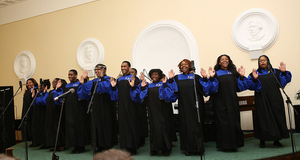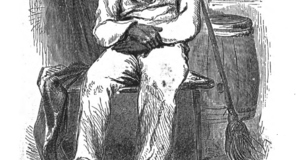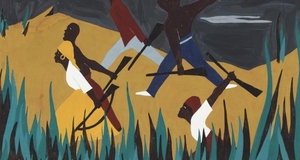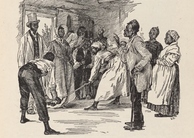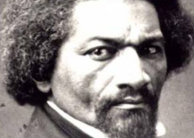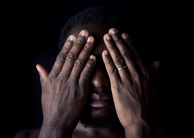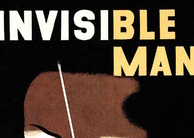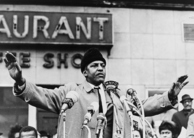Featured Article:Addressing Shortcomings in Afro-Pessimism
By
2016, Vol. 8 No. 09 | pg. 1/2 | »
IN THIS ARTICLE
AbstractAfro-Pessimism forwards a crucially important foundation with which anyone concerned with forming Black resistance strategy should navigate. It accurately understands that Black life exists outside of the traditional humanist metric, and Blackness is rather an ontological condition that is relegated to the level of the non-human. While Afro-Pessimism is a vital starting point, there are needed revisions to some theoretical applications within the field. Pessimists go too far in their understanding of how internal Black liberation interacts with its own ontology. This paper provides insight to the theoretical backgrounds found in Afro-Pessimism and redefines the application of theories such as social death in a way that allows space for meaningful resistance at both an institutional and internal level. There has been a dramatic increase in the amount of attention given to Black violence in the United States. Those scholars that are hoping to lead these conversations should have an efficient understanding of the historical arrangement of Blackness. History is a series of compilations of simulated responses to situations, and those give insight to not only the potentialities of implementing those strategies in the future, but also to the epistemic productions that created given structures of domination today. For those who embrace the challenge of crafting Black resistance strategy, a scholarly inquisition into the field of Afro-Pessimism would prove rewarding. Afro-Pessimism is a field of Black academic thought that seeks to analyze and address Black resistance by taking the Black subject position as a historical rearticulation of the process that produced the Middle Passage. The most shared foundation amongst Afro-Pessimists is that the condition of Black life in the modern era is not new or different, but that it is simply a nuanced recodification of the original violence on the plantation. It takes hundreds of years of historical, psychological, and sociological theory as its basis of resistance strategy. Scholars should use Afro-Pessimism as a starting point, but the field is not an end-point by any metric. Like many fields of study that concern themselves with the principles of high theory, Afro-Pessimism fails to articulate material methods for the masses to survive while implementing the strategies that it proposes. Some of its most famous scholars conclude their studies with calls for the end of the world or complete pessimism toward society based on the systemic demonization that the world presents to Black life. While the basis of these conclusion are grounded in great merit, their material application is simply too much of an individual price for Black life. The problem is that there is rarely an intersection between theory and application. This is not to say that concerns with the theoretical principles of Blackness are to be discarded. On the contrary, these theoretical principles need to be enriched and deepened in order to include both an ethic for deconstruction, as well as a standard for civic engagement. This is the only way to allow the celebration of Blackness within its demonization.Understanding Afro-PessimismAny exploration of Afro-Pessimism must begin with an exploration of the Middle Passage. The Middle Passage is often conflated with the Transatlantic Slave Trade which is understood as the economic exchange of goods for slaves. While it is true that the Middle Passage is primarily concerned with the advent of Chattel Slavery, it is a reductionist view to attribute the system of Black production to that singular point in time. There were other avenues for slave trade that existed as well, and as such, it is more productive to have an epistemic orientation that understands the Middle Passage’s beginning at the metaphysical desires for Black flesh. The beginning of the Middle Passage must not be when the African got onto the ship, but rather when those in power began to imagine the flesh. Any other theorization would omit the symbolic conceptions that inspired European exploitation of the flesh, and those exploits are what continue the drive for Black violence today. White people operated on libidinal conceptions of the African long before there ever existed a slave. The libido is a concept most relevant in the field of psychoanalysis which studies and attempts to map the unconscious mind. It influences and shapes the basis for sexual desire as a pursuit of power. The libidinal economy then is an organization of signs and symbols at the level of the metaphysical that originate from a sexualized need for control. Simply put, the libidinal economy can be understood as an intersection between sexual desire and domination. In terms of Africa, “White violence against the black body was compelled by a complex mixture of conscious identification, unconscious fears, and subconscious longings” (Tibbs and Woods 2008). Evidence of this is at the first European interaction with the African. Their first recorded observations of the Africans were not of their culture, but rather they were imaginations of the alleged African sexual bestiality (L-SAW 2010). Thus, the African became known by a bestial and sexual rubric within the white mind, and that shaped further interactions. Evidence of white libidinal desires to control and possess the African are also in the lines of demarcation drawn between the civilizations. The very basis of racial slavery began “…with desire for the symbols of purity, honor, and humanity represented by whiteness and made possible by blackness and for the pleasure, exoticism, and self-loathing epitomized by blackness as constructed in opposition to whiteness (Tibbs and Woods 2008).” This is the organization of those metaphysical curiosities that fueled the projection of sexual representations onto the flesh. This libidinal construction is how African breasts and buttocks came to be represented as sexually abnormal, and in turn, it is ultimately what led to the construction of the Black woman as sexually insatiable. This was the basis for the white libidinal imagination to set the stage for a type a slavery previously unknown to the world: racial slavery. The Middle Passage created a grammar of suffering that transformed an entire race of people into a commodity of sexualized objects. In the creation of the Black, there was no requirement for contravention in a political or economic sense. In the white mind, the very existence of the Black was an act of social contravention. For the first time, even “…prior to the contingency of the ‘transgressive act’ (such as losing a war or being convicted of a crime),” an entire body of people became permanently natural slaves (Wilderson 2010). The African was now identified as Black and came to be known in the world by a metric of slaveness which was understood to be a mere enforcement of the natural order of the universe. This was justified in the varying accumulations of white representations written onto Black bodies grounded in the inherent white desire to control and manipulate the flesh. The new era of racial slavery would become a substantial indicator of Black positionality throughout the world. The Middle Passage destroyed the cultural, social, and political remnants of what was once the African and forged it into a walking symbiosis of what was now Black. In this regard, racial slavery was like no other. Even in the case of the holocaust, “Jews went into Auschwitz and came out as Jews. Africans went into the ships and came out as Blacks…That is why it makes little sense to attempt analogy: the Jews have the Dead (the Muselmenn) among them; the Dead have the Blacks among them” (Wilderson 2010). The African went into the Middle Passage having a specific geographical home, a specific native language, and a specific faith, but she came out as Black. This is not to say that Black bodies lost everything on the slave ship, but rather the history of its existence is one that was deprived at the hands of the slave master. The traces of cultural fragments that managed to survive were subsequently demonized and degraded. This argument is not to prove that there is no Black history, but that Black history exists in a state of oscillation. It is simultaneously there and not there. As a method of keeping the slaves divided, the slave master would prevent the slaves from practicing indigenous religious and cultural traditions. Generally, “every effort conceivable was made to destroy all vestiges of what might endure as African social consciousness. [This country] was founded on the systematic, conscientious, and massive destruction of African cultural remnants” (Mayer 2000). This is why Blackness is that which can only be defined as in the context of absence. In regards to civil society writ large, the Black does not have the capacity to exist or be defined in positive terms because its very existence came from the imaginative and literal destruction of its flesh. Afro-Pessimism provides a valuable lens by which to understand the very complicated nature of Black positionality because it speaks to how Black bodies are principally situated at an ontological level. Ontology by definition is the study of being, and to speak of Blackness as an ontological condition means analyzing the state of Black bodies through the lens of slavery. This means that “Chattel Slavery, as a condition of ontology and not just as an event of experience, stuck to the African like Velcro…slavery is cathedralized. It ‘advances’ from a word which describes a condition that anyone can be subjected to, to a word which reconfigures the African body into Black flesh” (Wilderson 2010). It takes the societal point of stripping slave subjectivity on the plantation as a primary driver in the systemic and institutional lack of Black incorporation during the era of modernity. Put simply, if the slave experienced violence through a specific process, then it is important to analyze that process because the Black by definition is a derivative of the plantation. In this context, the description of the slave master restricting and destroying Black culture has far broader implications than normative condemnations of tyrannical treatment in bondage. The slave master’s restriction of the slave was a mere mechanism in the broader apparatus of society’s continual efforts to contain, manipulate, and eliminate Blackness. This process was the product of a system created at the site of the flesh in Africa, and the slave master was a mere tool in that system. This creates a distancing away from the typical notion of Blackness as an experiential question. Both the physical and symbolic markings of Blacks create a dilemma “[w]hereas Humans exist on some plane of being and thus can become existentially present through some struggle for/of/through recognition, Blacks cannot attain the plane of recognition” (Wilderson 2010). If ontological questions are entangled with a matter of purpose in existence, what then is the ontology of the Black man in a civilization founded upon his consumption? One of the most controversial tenants of Afro-Pessimism is the ontological concept by which the Black is understood: social death. This concept comes from Orlando Patterson who conducted a comparative study of 65 slaveholding cultures including Africa, Greece, Rome, Medieval Europe, China, and others (Franklin 1983). Social death relates to the inability to hold and wield power within society. It is the ultimate position of numbness; it is the state of existing as a mere commodity submissive to the rule of the master. Common definitions of slavery begin with some level of ownership that reduces the body to property, but Patterson draws an important delineation between slaveness and property. Ownership fails to speak to the level of ontology. Thus, slavery is more accurately understood as “the permanent, violent domination of natally alienated and generally dishonored persons” (Patterson 1982). From this comes the three tenants of social death: natal alienation, general dishonor, and powerlessness. First, natal alienation refers to the initial and continued separation of the slave from biological and cultural ties. While the slave undoubtedly formed kinship structures on the plantation, natal alienation speaks to the way in which slaves were inhuman in their inability to move “freely to integrate the experience of their ancestors into their lives, to inform understanding of social reality with the inherited meanings of their forebears, or to anchor the living present in any conscious community of memory” (Patterson 1982). It is not to say that kinship structures on the plantation were insignificant, but to highlight that the loss of natal ties is significant at the level of ontology. The fact that the descendants of slaves are now referred to by their relationship to the entire continent rather than a specific ethnic community is telling in this regard. Even when there are Black productions of culture in terms of music, food, or clothing, it is inevitably consumed and commodified by society. This cultural consumption should not be mistaken as acceptance, but rather it is an “expression of ontological expansiveness, which is a habit of white privileged people to treat all spaces—whether geographical, existential, linguistic, cultural, or other—as available for them to inhabit at their choosing” (Sullivan 2008). The Black exists in a state of cultural impossibility where it has no organic heritage and those artificial cultural products are appropriated by the libidinal desires of whiteness. The absence of natal relationality highlights the ontological nature of Blackness because it separates Black bodies from every other subject position in that they exist in the world without lineage. The second tenant of social death is general dishonor. This speaks to the legacy of slavery that both captures and contains the slave meaning that it impacts the enslaved whether she is formally on the plantation or not. Throughout the world, “’Slavery is a highly symbolized domain of human experience,’ and across time and cultures elaborate systems of rituals and customs were developed around the introduction and incorporation of the slave into the dominating society” (Franklin 1983). These rituals tend to manifest themselves as different legal formations, rhetorical circulations, and violent gatherings. They span from the early days of European conquest, to modern day media proliferations. Frank Rudy Cooper, a tenured professor at Suffolk University writes in Against Bipolar Masculinity of the oversexualization and inherent criminalization of Black men:
This process instills a legacy of general dishonor onto the slave follows them throughout the the modern world. Even if a slave reaches the state of legal freedom, they are still understood in the context of a slave’s worth. Patterson draws an important distinction between being honorable and acting honorable. The example of the palace eunuchs of China or Rome explain this distinction. Eunuchs were appointed to the position of palace guard, but in order to serve, they had to be castrated in order to prevent them from having sexual relations with royal women within the palace. Even though they, “were extremely influential and powerful, and at times, the subjects of honor…they were still generally considered degraded persons because of their physical deformities (due to castration) and slave status” (Franklin 1983). This distinction readily applies to the condition of racial slavery as well. Black slaves were often entrusted with important tasks such as overseeing other slaves or caring for the master’s children. Just as is the case today, “[t]he slave perfects itself as a slave when it bows down before its master of its own free will. That is the moment in which the slave accomplishes the impossible reconciliation of its freedom with its unfreedom by willing itself unfree” (Farley 2005). Services that the slave are forced to pay are still acts of enslavement no matter how important they may seem. This is a violent dilemma that only the enslaved are forced to endure. Value to life is found in productive purpose. Productivity in relationship with slaveness is always a state of commodification which makes subjective value impossible. General dishonor is an ontological question because it warrants complications in the slave’s ability to achieve honor within society. A successful slave is just that: a slave. The final tenet of social death is a perpetual state of powerlessness. This concept refers to the inherent lack of personal power in which the body is enslaved. The slave master, as the structure of slave society, has a right to the life of the enslaved. As such, he has the right to restrict, manipulate and confine the activity of the slave. The slave has no state of, or potential for, sovereignty over the one thing that ought to belong to oneself: the body. The ability of the master to create “a geography of containment that aimed to control slave mobility in space and in time [was] the centerpiece of the theory of mastery that elites laid out in law books and in plantation journals” (Camp 2002). It was the total possession of the body that constructed the master-slave relationship. The singularity of power in body politics gave the slave master the ability to not only rob, but to also grant slave subjectivity. This is the zero point of dependence. Perhaps the most violent dilemma of slave powerlessness is the suspension of the enslaved in a state of perpetual death, meaning that “[t]he execution was suspended only as long as the slave acquiesced in his powerlessness. The master was essentially a ransomer…Because the slave had no socially recognized existence outside of his master, he became a social nonperson” (Patterson 1982). Here, the slave’s life only exists as far as the master sees fit. The very capacity to determine expression of self is only known in terms of the master’s confinement. It is a state of psychological hell, where life can be rightfully taken at the desire of another. Thus, the tenant of powerlessness communicates enslaved existence is one that is only sustained and can only be measured through that of ownership. The Middle Passage created a special type of slavery unbeknownst to the world in that it created a racialized institution of chattel based on the process of commodifying the African into the Black. Prior to this, the world did not know race as a dominant system of social, political, or cultural politics because there were other modes of assigning value to communities. The rise of industrialization that came with the economic productivity of the Middle Passage meant that this new type of slavery became racialized. It “was the condition of possibility for defining the content of ‘free’ labour of the propertyless proletariat. To be ‘free’ and to be a worker was negatively defined in relation to the slave” (R.L. 2015). The need to maintain a lower white working class without aggregating them with slaves necessitated the creation of a social identifier that differentiated the labor production of slaves from poor whites. Though slavery had already constructed sexual representations onto the flesh of the Black, race became an identifier for that fleshliness. This is why Afro-Pessimism marks Chattel Slavery as absolutely unique. Even if the world’s other slaves existed in a state of social death, this was only temporary because their status of enslavement was not understood in terms of the flesh. The Middle Passage created infinite classifications within Blackness. Blackness is the infinite possibility for otherness understood in juxtaposition to the normative character of whiteness. This production of the Black, effectively assimilated past ethnic or religious minorities that may have experienced slavery into the social order while the slave never achieved such conversion. It is true that “Blackness is the site of absolute dereliction… for blackness in America generates no categories for the chromosome of history and no data for the categories of immigration or sovereignty. It is an experience without analog—a past without a heritage” (Wilderson 2007). While other groups undoubtedly experience unthinkable oppression, they still experience some degree of subjectivity while the slave is trapped in a perpetual state of social death.Continued on Next Page » Suggested Reading from Inquiries Journal
Inquiries Journal provides undergraduate and graduate students around the world a platform for the wide dissemination of academic work over a range of core disciplines. Representing the work of students from hundreds of institutions around the globe, Inquiries Journal's large database of academic articles is completely free. Learn more | Blog | Submit Latest in African-American Studies |








